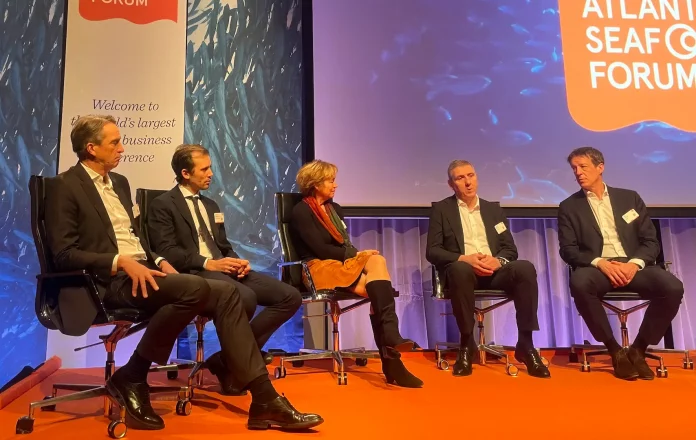Does salmon have an image problem?
During a round table discussion at the North Atlantic Seafood Forum in Bergen on Wednesday, leaders came together to address the industry’s image problem.
The panel included Anne Hvistendal, Global Head of Seafood at DNB, Steven Rafferty, CEO of Cermaq; Carl-Emil Kjølås Johannessen from Pareto Investment Banking; Jon Hindar, Partner at Summa Equity; and Fulco van Lede, CEO of Nutreco.
Taking the bull by the horns, Hindar expressed concern over the industry’s sustainability issue. “This is the only industry when the worse you do, the more money you make,” he said. “The more losses you have, the higher prices go. Social license is deteriorating.”
Unacceptable
The industry faces skepticism about its sustainability claims, and there’s a pressing need for enhanced transparency, according to the former Cermaq CEO. “If we don’t show tangible efforts, securing funding will become increasingly difficult. It’s time industry leaders step up and acknowledge our issues, moving beyond the rhetoric of the past 15 years.”
Anne Hvistendal, echoed Hindar’s sentiments, stressing that welfare has been overlooked in favour of carbon cutting: “When you see the development over the past few years, it is almost unacceptable, she said. “You need to do something about this.”
She highlighted DNB’s role in nudging the industry towards sustainability, but said there is more to do. “We’ve facilitated over $10 billion in sustainability facilities,” she noted. “While there’s good progress on CO2 emissions, animal welfare and ethical considerations are lagging. It’s crucial to engage not just with consumers and politicians, but with the general public on these ethical issues.”
One farmer, one fjord?
Carl-Emil Kjølås Johannessen of Pareto Investment Banking emphasized the importance of consistent communication. “The seafood industry must adopt a proactive approach, much like other Norwegian producers, to explain its actions continuously. The ‘one farmer, one fjord’ policy in Iceland could serve as a useful model for Norway,” he suggested.
Steven Rafferty from Cermaq highlighted the producer’s struggle with communications around sustainability.
“The industry has generally perhaps been too reactive,” he said. “I used to say that we could learn in Canada and Chile from the Norwegian industry. over the last 18 months, I would say there has been a lot not to learn from Norway.”
The industry may be using the wrong channels to communicate, Rafferty suggested. “There’s a general reactivity in our approach. Learning from the experiences in Canada and Chile, it’s clear that Norway also has areas for improvement. We need better communication strategies, particularly in regions less familiar with our industry.”

